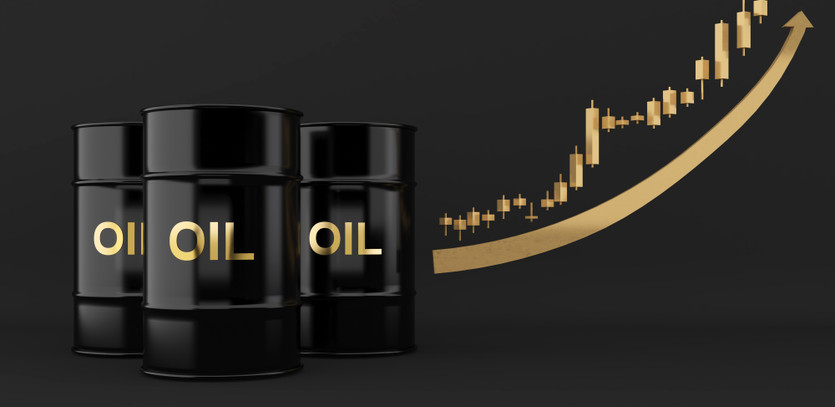Unraveling the Intricate Web: Crude Oil Prices, Gas Costs, and Policy Impact
Our understanding of the relationship between crude oil prices and gas costs isn't complete without a thorough exploration of the policies that influence them. This complex triad weaves a web of interconnected factors that ultimately dictate the numbers we see at the gas pump. Let's delve into this fascinating interplay.
The Dance Between Crude Oil and Gas Prices
-
Crude Oil's Clout: Over the past decade, crude oil prices have commanded a lion's share of the price tag on each gallon of gas—up to 50%. This underscores the foundational role of oil prices in determining gas costs. However, these prices oscillate daily, causing a constant ebb and flow in gas prices.
-
Distribution and Refinery Costs, and More: Beyond the price of crude oil, other elements such as refinery and distribution costs, corporate earnings, and state and federal taxes contribute to the final gas price. For example, as of February 2022, while 61% of the pump price was determined by crude oil, another 14% went towards refining.
The Policy Chessboard and its Impact
-
Geopolitical Intricacies: Policies, both domestic and international, can strongly sway oil and gas prices. A striking example of this is the effect of geopolitical conflicts on energy markets. For instance, Russia's invasion of Ukraine caused significant market disturbances, resulting in record-breaking gas prices due to Russia's prominent role as one of the world's top oil exporters.
-
Domestic Measures: In response to these changes, countries often introduce policy measures to manage the situation. In the United States, the Biden administration announced a ban on Russian oil imports in March 2022, further fueling the surge in gas prices.
-
The Strategic Petroleum Reserve (SPR) - The Ace up the Sleeve: The Department of Energy in the U.S. also announced the release of oil from the Strategic Petroleum Reserve (SPR), a critical buffer used to mitigate supply disruptions. By April, the SPR release began to help prices cool off.
In this complex world of crude oil prices, gas costs, and policy measures, it's clear that these variables dance together in a delicate ballet. Each movement has the potential to significantly impact the global energy market, making the understanding of these relationships essential in today's energy-dependent world.
The Historical Dance of Oil and Gas Prices: Peaks and Troughs
The dynamic dance of oil and gas prices has been nothing short of a roller-coaster ride. Since the financial catastrophe of 2008, the ballet of these two essential commodities has been a testament to market volatility. Below we delve into this intricate pas de deux, marking out the significant pirouettes and dips over the years.
West Texas Intermediate (WTI) serves as a performance stage for this dance. It's the crude oil used as a gauge in U.S. oil pricing. With the spotlight on this benchmark, the rise and tumble of crude oil prices since the 2008 financial crisis has shaped the price of gas at the pump.
Here's a glimpse into this whirlwind performance:
-
2022: The AAA reported in March that the national average gas price hit a record high of $4.30 per gallon. This leap was ignited by Russia's invasion of Ukraine, and it showcased a sharp ascent of $1.31 from the average of March 2021.
-
2021: This year started with a measured pace. By late January, gas prices were averaging $2.39 per gallon. However, the tempo picked up by early November, with prices climbing to $3.39 per gallon.
-
2020: The dance in 2020 was marked by an unparalleled dip. An oil price war and a worldwide pandemic forced the price of oil to plunge below zero, to nearly -$37 per barrel (/b) in April. This dip was due to a technical imbalance in the futures market, with oil prices subsequently moving back into positive territory. Nevertheless, the price of regular gas remained below $2/gallon until June, when oil prices rebounded to $40/b. The oil price rebound sent the regular gas price up to $2.17/gallon.
-
2015: The year ended with oil prices falling below $37/b, driving regular gas prices below $2/gallon in early 2016. Gasoline prices performed a stable waltz between $2 and $3 per gallon of regular gas for most of the next five years.
-
2011: In April, oil prices rose to around $113/b. Within a month, regular gas prices had climbed to $3.96/gallon. For the majority of the next three years, oil prices stayed over $90/b, with a few brief dips below this level in response to geopolitical tension in the Middle East. In turn, gas prices remained steadily above $3/gallon for regular gas until late 2014.
-
2008: This year was marked by a dramatic high and low. Oil soared to around $145/b in July, leading to regular gas prices reaching $4.11/gallon. However, by early December, oil had plummeted to around $49/b, and regular gasoline prices followed suit, dropping to $1.81/gallon.
This historical odyssey of oil and gas prices sheds light on the delicate interplay between the two, influenced heavily by geopolitical events, economic fluctuations, and unforeseen circumstances like global pandemics.
Supply, Demand, and OPEC: The Triumvirate Shaping Oil and Gas Prices
The pricing of oil and gas doesn't exist in isolation; it's governed by an intricate triptych comprising supply, demand, and the machinations of the Organization of Petroleum Exporting Countries (OPEC). This powerful triumvirate shapes the narrative of oil and gas prices, crafting a tale of market dynamics and strategic maneuvering.
-
The Supply and Demand Ballet: Much like other commodities we purchase, oil prices pirouette to the rhythm of supply and demand.
- Demand: It rises during the summer driving season, nudging prices higher. Conversely, demand and prices soften in the winter, with only certain northern states requiring heating oil.
- Supply: Oil price futures, traded on the commodities exchange, are a significant factor determining supply and, subsequently, oil prices. These prices swivel daily based on investors' projections for the future price of oil.
-
The OPEC Orchestra: Comprising 13 oil-producing nations, OPEC orchestrates 36% of the world's crude oil supply. Formed in 1960, these countries banded together to control oil supply and pricing, recognizing the finite nature of their resources.
- OPEC's influence came to the forefront during the 1973 oil embargo, when it curtailed oil supply to the United States, causing prices to escalate and reshaping the balance of power in global oil production.
- While the U.S. also imports oil from non-OPEC member Mexico, reducing dependence on OPEC, the organization's influence on global oil pricing remains significant.
-
The Strategic Petroleum Reserve (SPR): This reserve acts as a safety net for supply interruptions. As of March 2022, the U.S. stored 577.5 million barrels of oil in the SPR. This buffer allowed the U.S. to release 30 million barrels in March 2022 to mitigate supply issues induced by the Russia-Ukraine conflict.
The ballet of supply and demand, accompanied by the OPEC orchestra, weaves an intricate tale of fluctuating oil and gas prices. These factors, often influenced by larger economic and geopolitical contexts, hold the reins of the global energy market.
The Global Thirst for Oil: An Examination of Demand and Its Implications
Oil, the lifeblood of modern society, powers economies and shapes geopolitical relations. Its demand is a global phenomenon, impacting countries and their populations in myriad ways. Let's take a closer look at where this demand is most concentrated and how it shapes the oil landscape:
-
The United States, The Consummate Consumer: In 2019, the United States quenched its thirst with about 20% of the world's oil. Most of this oil powers the nation's vast transportation network. This substantial demand exerts a strong influence on global oil markets and has significant geopolitical implications.
-
China and India, Emerging Powerhouses: Coming in next in the global oil consumption race are China and India. These two emerging economic powerhouses consumed approximately 14% and 5% of the world's oil production, respectively. As these economies continue to grow, their demand for oil is expected to increase, potentially reshaping the global oil market.
-
Japan and Russia, the Steady Consumers: These two nations each utilized about 4% of the world's oil production. Despite their different economic structures and geopolitical roles, their demand for oil remains significant and stable.
The global demand for oil has far-reaching implications. Not only does it shape the oil market, but it also influences geopolitical relations, environmental policies, and the global economy. This worldwide thirst for oil underscores the need for sustainable energy solutions and responsible consumption practices.
The Speculator's Gambit: Impact on Oil and Gas Prices
Speculation can create a dramatic narrative in the world of oil and gas prices. It can make an otherwise calm market bristle with unpredictability, showcasing how investor sentiment and strategy can have a profound impact on real-world pricing.
-
Futures Contracts - Betting on the Future: In the world of oil trading, oil futures - agreements to buy or sell oil at a specified date in the future at a predetermined price - serve as a central plot device. These contracts enable traders to speculate on the future price of oil, often leading to volatility in current prices.
- If traders anticipate a surge in demand due to a robust global economy, they can bid up the price of oil. This can result in high oil prices, even when there's ample supply.
-
The Asset Bubble Phenomenon: The speculation saga occasionally spawns asset bubbles, where the prices of assets inflate rapidly, only to burst and cause significant financial distress.
- This happened to gold prices in the summer of 2011 and the housing market in 2005. The bursting of the housing bubble, in particular, was a precursor to the 2008 financial crisis.
-
The Market's Invisible Hand: Speculation essentially plays the role of the market's invisible hand, shaping and swaying oil and gas prices. While it introduces volatility, it's also instrumental in offering signals for future pricing trends.
In essence, speculation plays a critical role in the oil and gas market, adding layers of complexity and risk, while simultaneously offering opportunities for savvy investors. It's a crucial element that drives market dynamics and demands constant attention.





